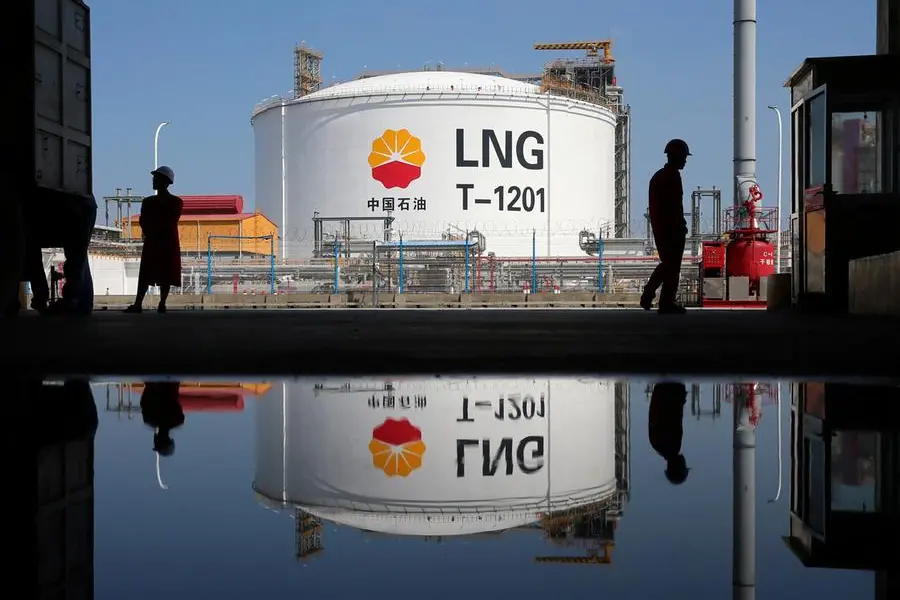PHOTO
(The opinions expressed here are those of the author, a columnist for Reuters)
LAUNCESTON, Australia - China's crude oil imports will average 10.8 million barrels per day (bpd) in 2023, matching the previous record high from 2020, according to the think tank of the country's leading energy group.
Imports will rise 6.2% from last year to 540 million tonnes, while refinery processing will gain 7.8% to 733 million tonnes, equivalent to 14.66 million bpd, China National Petroleum Corporation's Economics and Technology Research Institute (ETRI) said in its annual industry outlook released on Monday.
The forecasts are largely in line with those of private analysts, who have tipped a rebound in China's fuel consumption as the world's second-largest economy reopens after ending its strict zero-COVID policy late last year.
The ETRI forecast is for crude oil imports to rise by 630,000 bpd in 2023, which is below the 900,000 bpd expected by the International Energy Agency, but above estimates from some analysts, such as Wood Mackenzie and S&P Global Commodity Insights.
Forecasts are useful insofar as they provide insight into the expectations of participants in the market, but it's also useful to look at some of the risks around the estimates.
What is interesting with the ETRI forecasts is that they would seem to show that China's refiners are still expecting to add crude oil to stockpiles over 2023.
Assuming domestic oil production remains relatively steady over 2023 at the 4.23 million bpd achieved in the first two months of the year, it implies that a total of 15.03 million bpd will be available to refiners from imports and local output.
This is some 370,000 bpd more than the ETRI forecast for refinery throughput of 14.66 million bpd.
If these sort of volumes are added to inventories in 2023, it would be lower than the 740,000 bpd added to storage tanks in 2022.
China doesn't disclose the volumes of crude flowing into or out of strategic and commercial stockpiles, but an estimate can be made by deducting the amount of crude processed from the total of crude available from imports and domestic output.
NEW REFINERIES
It's likely that some of the oil heading for storage will go to build working inventories for new plants expected to be commissioned this year.
Two new refineries - PetroChina's Guangdong Petrochemical and Jiangsu Shenghong Petrochemical with a combined capacity of 520,000 bpd - are expected to enter commercial operation in the coming months, industry sources said last month.
A third new plant, Shandong Yulong Petrochemical's 400,000 bpd project, may also begin crude imports for possible test runs by the end of the year, a company source told Reuters.
Flows in, or indeed out of, either commercial or strategic reserves are the biggest X-factor for China's crude oil imports.
The assumption of modest inventory builds as part of the commissioning of new refining units is a safe choice, but it's worth noting that China's refiners and the authorities in Beijing tend to use stockpiles to smooth out prices, even if they don't talk about this in public.
Imports could rise by more than expected if crude oil prices drop and remain low, a situation that is possible if the world economy goes into recession, or a banking crisis ensues after the collapse of two U.S. lenders and the forced sale of Credit Suisse.
Conversely, if global oil demand growth is robust and prices head higher, Chinese refiners may choose to reduce imports and dip into their reserves.
Another factor that isn't subject to market imperatives is the level of fuel exports, which is set by the government through the issuing of permits.
Exports of refined products ramped up in recent months as Beijing sought quick economic stimulus and allowed refiners to take advantage of strong margins in Asia for fuels, especially diesel.
But there is no guarantee this policy will persist over the whole of 2023, and if domestic demand does rebound, then it's likely fuel exports will be curbed.
The opinions expressed here are those of the author, a columnist for Reuters.
(Editing by Jacqueline Wong)





















